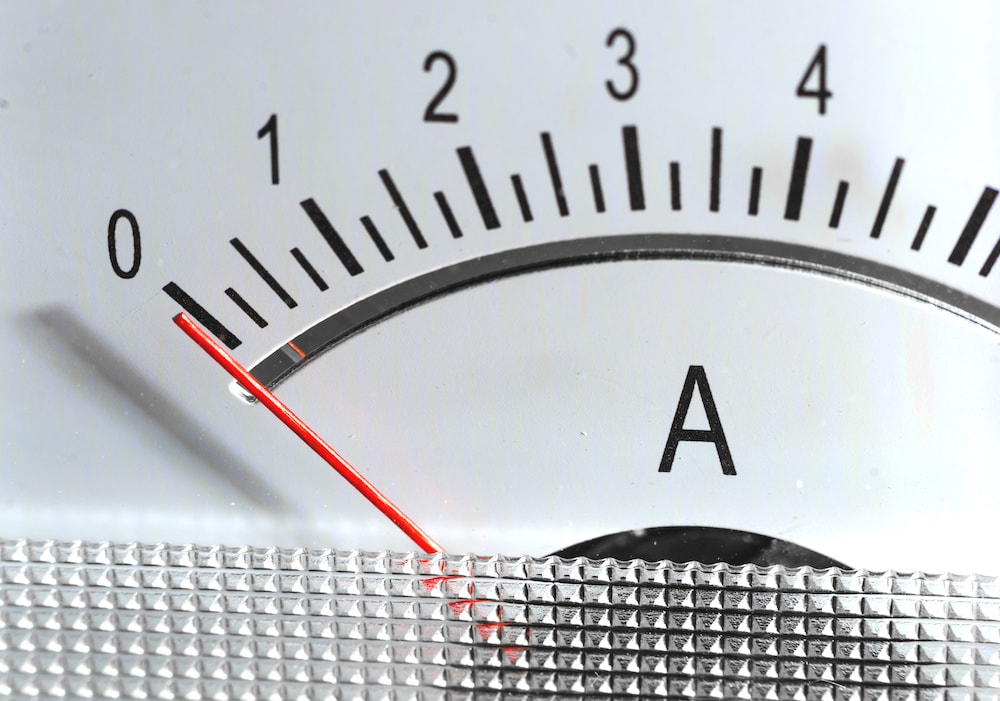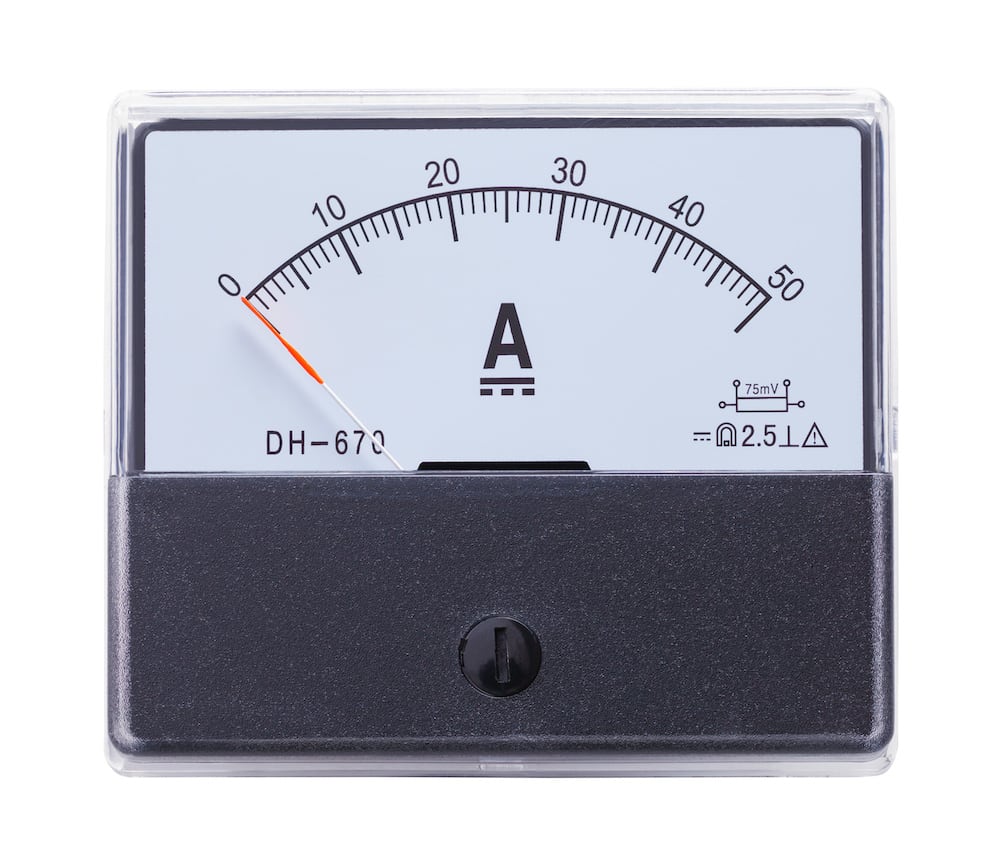- Published 19 Apr 2024
- Last Modified 19 Apr 2024
- 7 min
How to Choose the Right Amp Meter for Your DIY Electronics Project
Learn how to select the proper amp metre for your DIY electronics projects. Boost accuracy, enhance safety, and elevate your electrical craftsmanship.

Choosing the proper amp metre is pivotal for any DIY electronics project, allowing you to measure circuit current for troubleshooting or optimising the performance of your electronics. However, engaging in electrical tasks demands a solid grasp of the fundamentals to ensure your safety and the success of your home DIY project.
Remarkably, electrical fatalities in Australia have dropped by over 77%, from 1.87 to 0.42 deaths per million people over the last two decades, according to the Electrical Regulatory Authorities Council.
To continue this positive trend, we've outlined a guide to help you choose the right amp metre, ensuring you can confidently undertake DIY electronics projects and comply with the best safety standards.

What are Amp Metres
For home DIY enthusiasts, amp metres are critical tools for accurately gauging electrical current, which is crucial in the maintenance, repair, or assembly of electronic projects. These metres allow users to evaluate the health and efficiency of electronic devices, ensuring they function within their designed electrical parameters.
Diving into the types of amp metres, we find two main categories:
- Analogue Amp Metres: Feature a moving needle to display current magnitude, ideal for dynamic testing.
- Digital Amp Metres: Provide precise digital readings, making them suitable for accurate measurements in modern electronics.
Now, let's explore the different amp metres based on their internal mechanisms:
- Moving Coil: Primarily for Direct Current (DC), a magnetic field moves a pointer for accurate electrical measurements.
- Moving Iron: An iron piece attracted or repelled by a coil's magnetic field measures Alternating Current (AC) and DC currents.
- Electrodynamic: Features coils in an electromagnet's field, measuring AC and DC currents by electromagnetic interaction.
- Moving Magnet: Involves a stationary coil and a movable magnet; the magnet moves to indicate current, suitable for measuring higher AC or DC.
- Hot-Wire: Current heats a wire, causing expansion and measurement. Due to thermal response, it is practical for high-frequency current measurements for AC and DC.
Key Features to Look for in an Amp Metre
Moreover, ensure that your amp metre is essential for effective and secure electronics home projects.
- Accuracy: Compliance with IEC 61010 standards in an ammeter is crucial for ensuring accurate measurements and user safety in electronics projects.
- Safety Features: Note the International Electrotechnical Commission's (IEC) CAT (Category) ratings, which indicate an amp metre's safety level for different electrical tasks.
- Durability and Build Quality: Prioritise amp metres with an IP (Ingress Protection) rating that indicates dust and water resistance. Also, consider metres with reinforced, shock-resistant casings to endure falls and bumps.
Analogue vs Digital Amp Metres for Australian DIYers
Delve into the advantages and disadvantages of analogue and digital amp metres to determine which suits your DIY electronic home project best.
Analogue Amp Metres
Pros:
- Provides a direct visual representation of current changes, ideal for applications where observing fluctuation in real-time is critical.
- They can operate without a power source.
Cons:
- Lack of precision compared to digital metres. Reading the exact value can be challenging.
- The scale can be challenging to interpret across a wide range of values, requiring more estimation and potentially leading to reading inaccuracies.
Digital Amp Metres
Pros:
- Excel in precision and accuracy, displaying exact numerical values that eliminate guesswork.
- Equipped with additional features like data logging and backlit displays.
Cons:
- Dependency on batteries or an external power source can be a limitation, especially in remote areas or when power access is restricted.
- It can be more expensive due to their advanced technology and extra features.
So, which one should you choose?
If your electronics project is straightforward and you appreciate a quick, visual indication of current flow, go for an analogue ammeter. If your project is more complex or requires high precision, a digital metre will serve you better.
Types of Home DIY Electronics Projects That Use an Amp Meter
Amp metres are essential for DIY electronic enthusiasts, guiding effective project execution across various applications. Here are some examples of how the metre is utilised:
- Solar-Powered USB Charger: Here, the amp metre's job is to accurately measure the current flowing from the solar panel to the charger circuit. This ensures that the charger provides a stable and safe charging current to devices. Without this measurement, there's a risk of undercharging (leading to inefficiency) or overcharging (potentially damaging the device).
- Custom LED Lighting for Home Studios: An ammeter measures the current consumption of LED strips. It ensures that the LEDs receive the correct current to function optimally and prevents the risk of overdriving them, which could lead to overheating and failure.
- Repairing Small Appliances: Many households face issues with small appliances like toasters, coffee makers, or lamps. An amp metre diagnose problems, specifically to check if the appliance is drawing more current than it should, which might indicate a short circuit or a malfunctioning component.
Tips for Using Amp Metres Safely
As we've highlighted earlier, a thorough understanding of the basic principles behind using amp metres is crucial for the safety and success of your home DIY electronics projects. Follow these tips below:
- Proper Handling: Always hold the amp metre firmly by its insulated casing to prevent accidental contact with electrical components.
- Safety Checks: Inspect the metre and its leads for any damage before use. Do not use it if you notice frayed wires or cracked casing.
- Follow Manufacturer Instructions: Each amp metre may have specific operational guidelines. Adhering to these ensures safe and proper use.
- Use Correct Settings: Ensure the metre is set to the correct measurement type and range before connecting it to a circuit.
- Disconnect Power: Disconnect the power source before attaching or removing the amp metre from a circuit.
While prioritising safety, achieving accurate results is equally important. Here’s how to measure current accurately:
- Connect Correctly: Plug your amp metre into the circuit between the power source and the device you're measuring, like a bridge, to get the correct current reading.
- Select the Right Range: If your metre is auto-ranging, it will adjust itself. However, in manual metres, starting with a higher range and adjusting as needed can prevent overloading the metre.
- Use Calibration Tools: A calibration unit verifies your amp metre's accuracy. Calibration against a known standard can help adjust any discrepancies.
- Regular Maintenance: Regularly check the leads, battery, and metre for any signs of damage or wear. A well-maintained metre is more likely to provide accurate readings.
- Consistent Checks: Regularly compare your metre’s readings with known values to detect deviations.
- Adjustments: Should discrepancies arise, adjust according to the manufacturer’s instructions or use the calibration function if available.
Equipped with this foundational knowledge, you’re now ready to navigate the complexities of home DIY electronics projects, ensuring both safety and precise outcomes.
Power Up Your Projects with the Right Amp Metre

You can shift your DIY electronics from hobbies to precision projects with the right amp metre. Kick-off this exciting journey with RS Australia's amp metres, offering both digital metres for complex tasks and analogue ammeters for simpler ones. Unlock your project's potential with the right electrical tools today.
Popular Amp Metre Brands
Schneider Electric
Schneider Electric, renowned for innovation in energy and automation, crafts amp metres that redefine power management, blending efficiency with smart technology for superior electrical solutions.